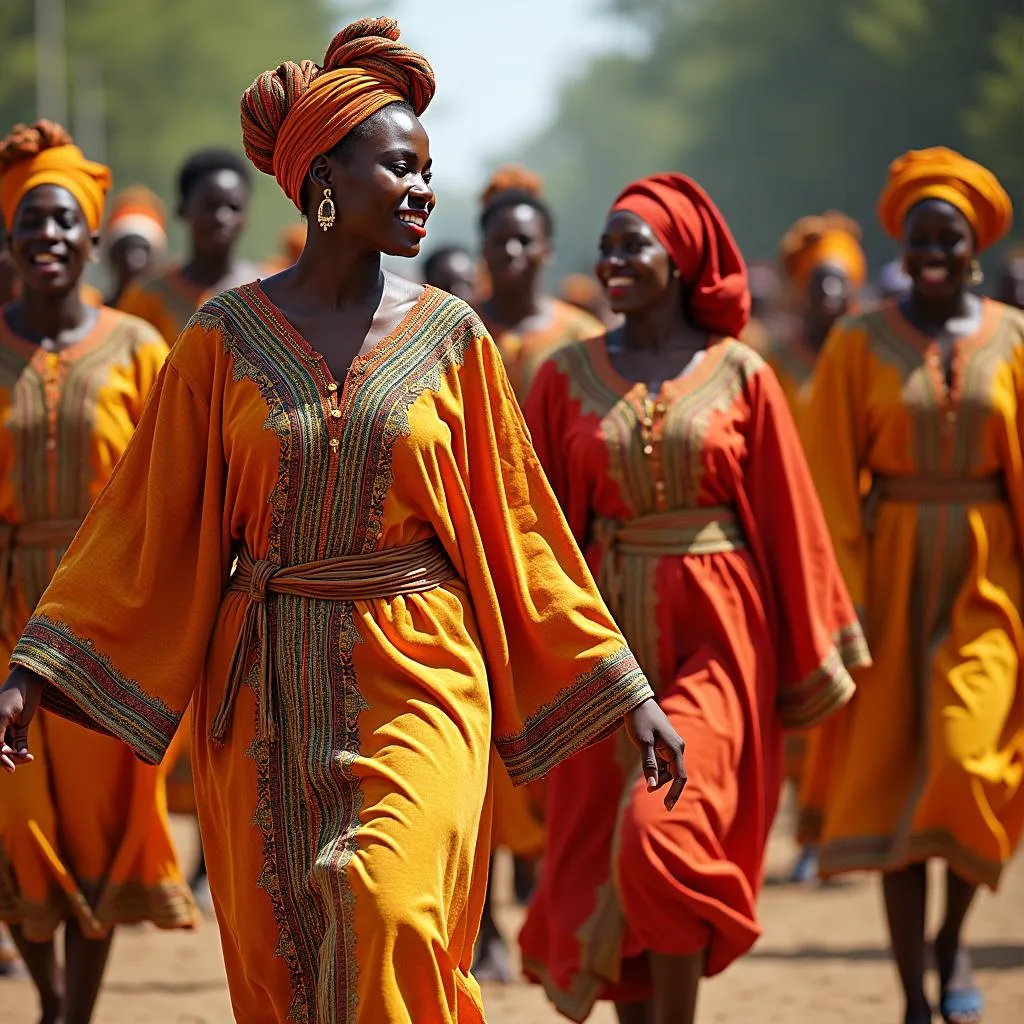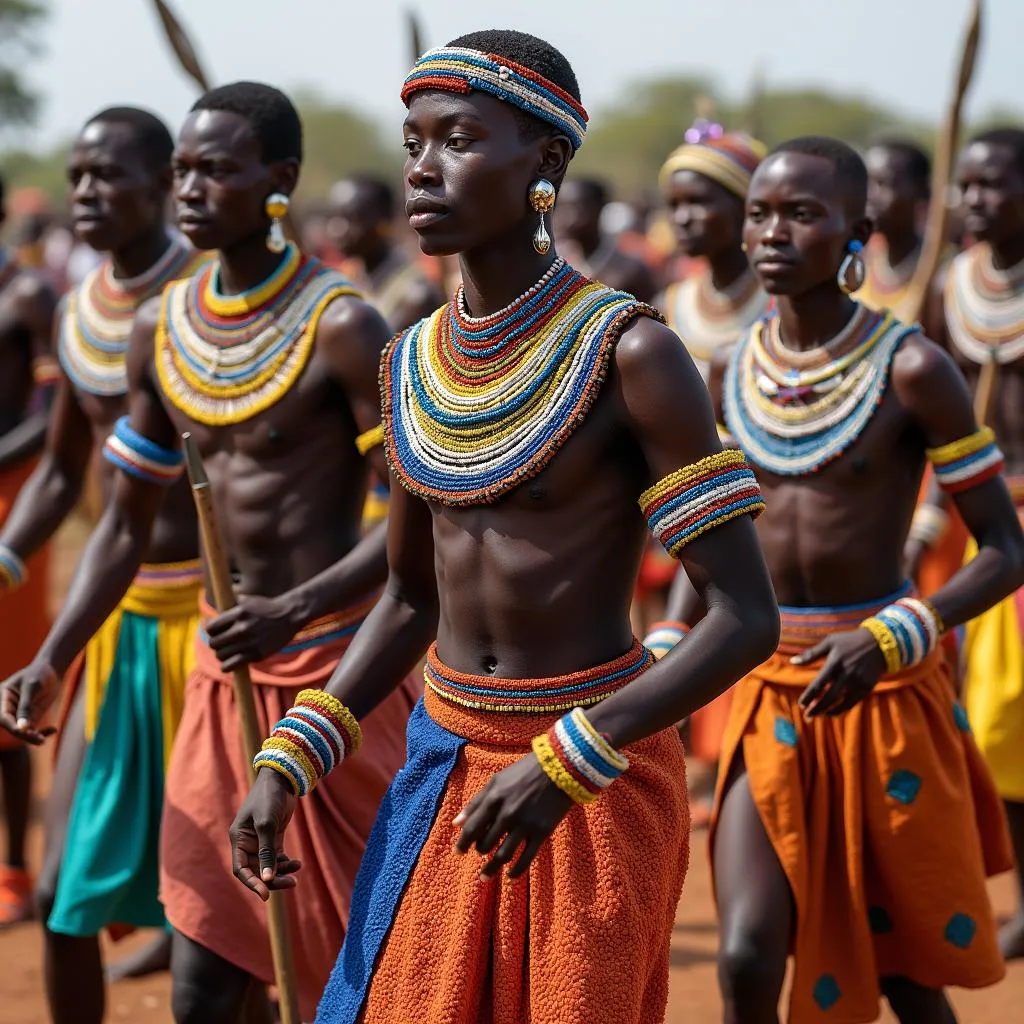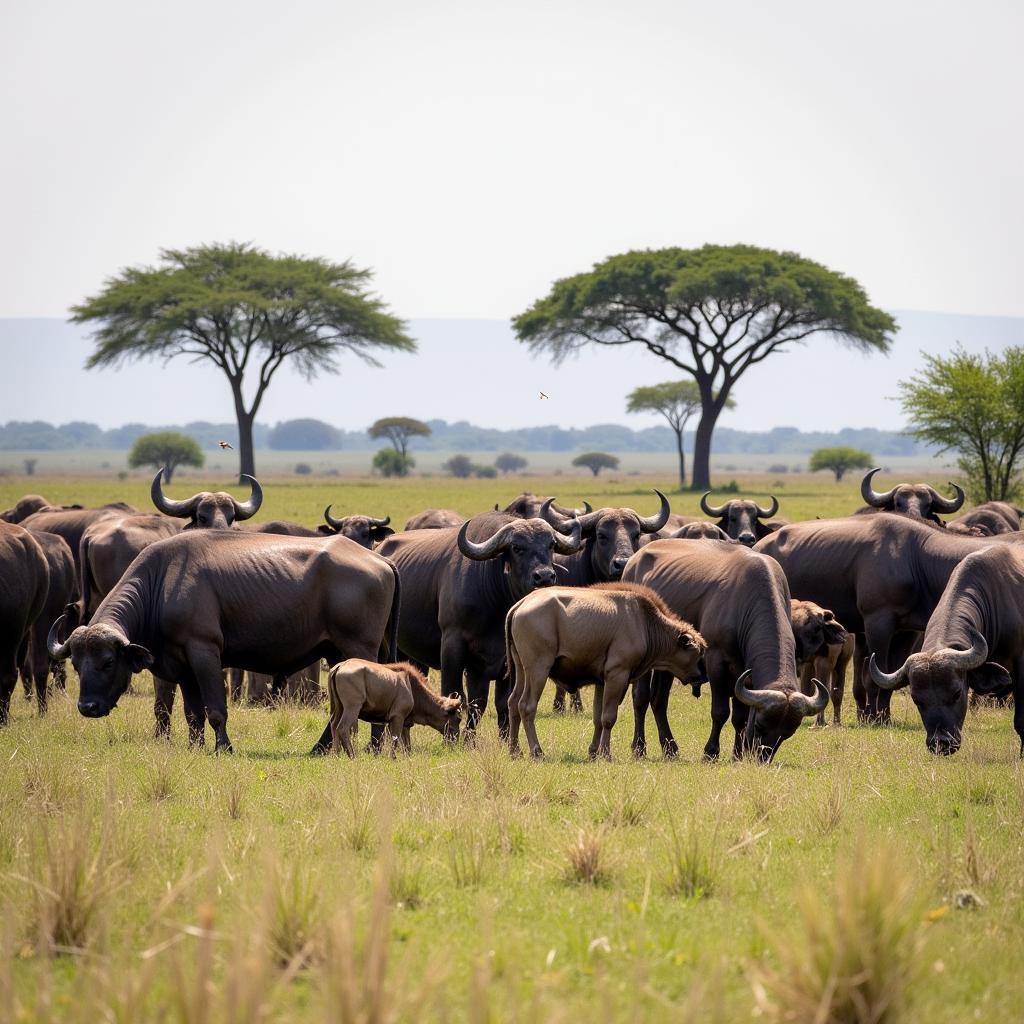The Vibrant World of African Dancing Dress
African Dancing Dress is more than just clothing; it’s an explosion of color, texture, and symbolism that embodies the spirit of the continent. From the flowing robes of West Africa to the intricate beadwork of the Maasai, each region boasts a unique style that reflects its history, beliefs, and relationship with the land. These garments are not merely decorative; they are an integral part of storytelling, rituals, and celebrations, pulsating with the rhythm of the drums and the energy of the dancers.
A Tapestry of Cultures and Styles
The vastness of Africa is reflected in the diversity of its dancing dress. Each region has developed its own aesthetic, influenced by factors like climate, available resources, and cultural values. Let’s embark on a journey through some of the most captivating styles:
West Africa: A Celebration of Flow and Movement
 West African Dancers in Flowing Robes
West African Dancers in Flowing Robes
West Africa is renowned for its vibrant fabrics and flowing silhouettes. The iconic “boubou” is a long, loose-fitting robe worn by both men and women, often made from richly patterned cotton like Ankara or Kente cloth. Women often pair their boubous with matching headwraps, skillfully tied into elaborate styles that complement their movements. The fluidity of these garments accentuates the graceful, rhythmic movements characteristic of West African dance.
East Africa: The Elegance of Beadwork and Adornment
 East African Dancers with Beaded Jewelry
East African Dancers with Beaded Jewelry
In East Africa, beadwork takes center stage. The Maasai people are known for their intricate beaded necklaces, bracelets, and collars, which signify age, status, and marital status. The vibrant colors and geometric patterns add a mesmerizing dimension to their dances. Other groups, like the Samburu and Turkana, also incorporate elaborate beadwork into their traditional attire. These pieces are not just decorative; they tell stories, convey messages, and connect the wearer to their heritage.
Southern Africa: Animal Skins and Natural Textures
In Southern Africa, the influence of nature is evident in the dancing dress. Animal skins, feathers, and natural fibers feature prominently, reflecting a deep connection to the land and its creatures. Zulu warriors, for instance, wear elaborate headdresses and skirts made from animal hides and feathers, symbolizing their strength and prowess.
 Southern African Dancers in Traditional Attire
Southern African Dancers in Traditional Attire
The Significance of Color and Symbolism
In African dancing dress, every element is imbued with meaning. Colors, patterns, and accessories are carefully chosen to communicate specific messages and evoke particular emotions.
“African dance attire goes beyond mere aesthetics,” says Dr. Abena Owusu, an expert in African art and culture. “It’s a visual language, rich in symbolism and storytelling.”
For example, red often represents power and vitality, while white symbolizes purity and peace. Geometric patterns might denote ancestral connections or spiritual beliefs. Even the way a garment is draped or accessorized can convey a specific message, like marital status or social standing.
Preserving Tradition, Embracing Evolution
Today, African dancing dress continues to evolve, reflecting the continent’s dynamic cultural landscape. Contemporary designers are drawing inspiration from traditional styles, incorporating new fabrics, silhouettes, and techniques. This fusion of old and new ensures that African dance attire remains relevant and continues to captivate audiences worldwide.
Whether gracing the stage or celebrating a cultural event, those who wear African dancing dress carry with them the spirit of a continent, its history woven into every thread and bead.
FAQ
1. What is the most common fabric used in African dancing dress?
While fabrics vary greatly across regions, cotton is a popular choice due to its versatility and comfort in warmer climates.
2. Are there specific rules regarding who can wear certain types of African dancing dress?
Yes, some garments are reserved for specific ceremonies, age groups, or social statuses. It’s essential to approach cultural attire with respect and understanding.
3. Where can I learn more about African dancing dress?
Museums, cultural centers, and online resources offer a wealth of information. You can also find insightful documentaries and books that delve deeper into this fascinating subject.
Need Help?
For inquiries or assistance, contact us at +255768904061, email [email protected], or visit our office at Mbarali DC Mawindi, Kangaga, Tanzania. Our customer support team is available 24/7.
Explore more about the diverse aspects of African culture on our website. You might be interested in African dating culture or the symbolism behind African bouncers.
